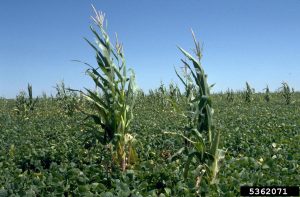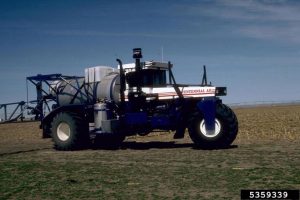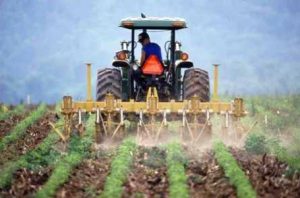Chapter 1: What is a Weed? Why Do We Care?
1.4 Direct Costs

The presence of weeds in a field crop imposes added costs to the farmers in order to manage the weeds and prevent crop yield losses. Some of these costs are direct, while others are more indirect. An obvious direct cost is that farmers will have to either apply herbicides or use some kind of tillage in order to control the weeds. The cost includes both that of the herbicide chemical and the herbicide application, whether you apply a herbicide yourself or hire it done. You also have to consider at what point will you be saving more yield compared to the cost of actually applying the herbicide? Later in this book we’ll look at all of the elements to help you make the decision on when is a good time to apply or not, and have you reached that threshold or not?

In addition to herbicides (chemical weed control), there are also options for mechanical weed control (tillage, among other methods). In fact when you look at global agriculture mechanical control is still widely utilized and in some cases even done by hand. In global rice production, up to 90% of fields are hand weeded even now in our modern day. Later on, we’ll take a closer look at various mechanical weed control options, including benefits and drawbacks of each.

A non-biological direct cost would be that weeds could interfere with harvesting the crops. The weed plants can plug a combine when there is a lot of stem and leaf tissues and if the weeds are not dried down, this will also create harvesting problems. In addition, the presence of green weeds in harvested grain will actually increase the moisture content of the grain overall. Not only can it cause spoilage of the grain, this added moisture can lead to a lower price for the grain and/or added expenses to dry it down before taking it to market. In some cases with wheat fields, farmers will have to spray with glyphosate near harvest time so it does not harm the wheat, but will kill back a severe weed infestation and therefore make harvesting more productive.
Effects on Crop Quality Leading to Direct Costs
Weeds can negatively impact the quality of all crops, including, but not limited to, forages and grains. In forages sometimes there are problems with weeds in the mustard family which directly lower feed quality. Weeds can also reduce harvest quality in row crops. Examples of this include staining the grain and/or contaminating grain with weed seeds. If there are too many seeds present when taking the grain to the local elevator, the farmer will incur dockage (reduced price for their crop) or added expenses to clean the grain before taking it to market.
For some weeds, penalties could also be more severe. One example is if you have problems with wild garlic in your wheat fields. This could cause your load to be rejected when you get to the elevator due to the contamination. There are also certain weeds prohibited from crossing state borders. For these noxious weeds, state laws ban your ability to sell harvested grain containing certain levels of weed seeds present.
Review and Reflection